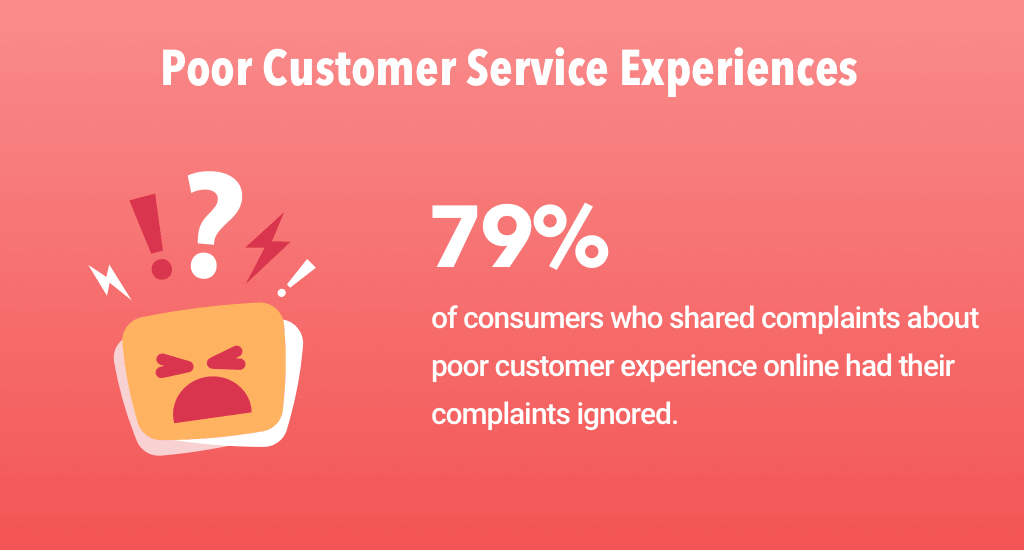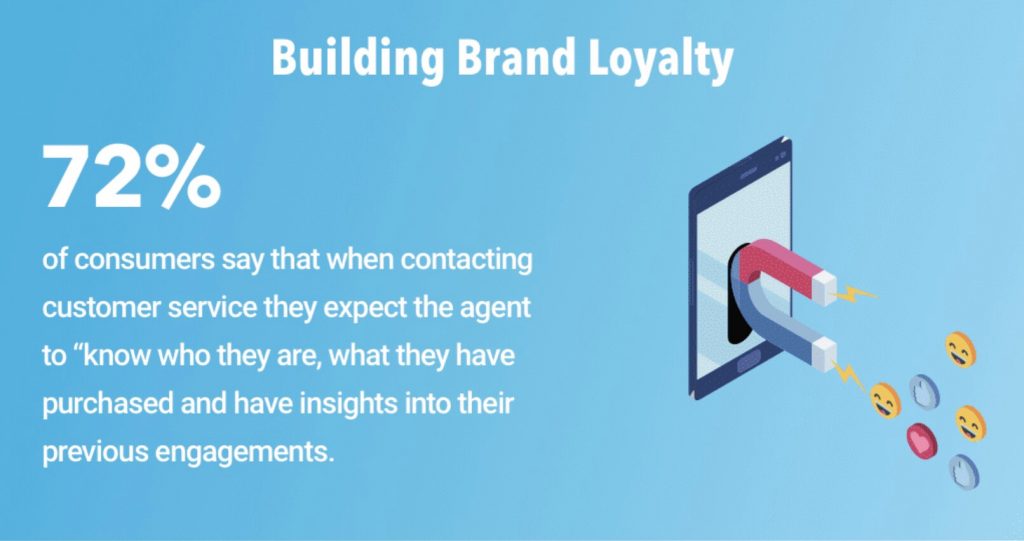
Bad Customer Service: Stories And Tips To Avoid Common Mistakes
Poor service can be a huge problem in most industries. The ACA report reveals that 76% of customers would willingly switch to a company providing superior service, and 82% gain increased trust in a brand through excellent customer experiences.
In a fiercely competitive landscape, substandard service can lead to customer attrition, adverse social media publicity, and revenue loss. Shep Hyken estimates businesses lose around $75 billion annually due to poor customer service. Regardless of shifting customer loyalties, the fact remains that customer experience is now the main battlefield for over two-thirds of companies.
In this article, we'll share bad customer service stories that have become nightmares for careless companies. Drawing from Simply Contact's global outsourcing experience, we'll also provide insights on how to avoid such pitfalls.

Worst Customer Service Stories
According to a report by Accenture, customer experience continues to be a vital metric for brand performance in 2023. This ongoing trend emphasizes the importance of customer service and warrants our attention on sharing notable examples of poor customer service. By analyzing these instances, businesses can learn valuable insights to improve and avoid similar pitfalls.
Insanely luxurious delivery
A customer once ordered three packs of toilet paper from Amazon for around $90, only to discover a delivery charge of over seven thousand dollars. Shocked, the buyer reached out to customer support and even wrote to CEO Jeff Bezos, only to be met with refusal. The incident gained attention after being featured on a local TV channel, forcing Amazon to provide a refund nearly three months later.
The problem was clearly an oversight in customer service that failed to check shipping costs adequately. This blunder could have been avoided with better inquiry skills, rather than total reliance on automated processes.
“Chaos hotline”
American telecommunications corporation Comcast is known for having busy customer service lines, making it difficult for people to get through. But that's not the only issue.
One customer found themselves on the hotline for 3.5 hours just to cancel an unnecessary service. Another customer faced what they called “employee resistance” when they attempted to terminate a contract over the phone. Despite spending almost 10 minutes explaining their intention, the employee aggressively demanded a specific reason. The customer eventually got their way, but the story left a mark. Comcast officially expressed regret for the incident, but its reputation undoubtedly took a hit.
Flight miscommunication debacle
Airlines frequently become the subjects of customer service horror stories. Take, for example, the case of Chu Lisong Chang. Upon arriving at Vancouver Airport for her Sunwing Airlines flight to Toronto, she was informed that the plane had already taken off four hours earlier.
Chu was forced to purchase expensive tickets from another airline, despite receiving no notification of the schedule change. The situation was already frustrating, but it became even more so when she contacted the airline and the travel agency that sold the ticket. Both parties simply shrugged, claiming it wasn't their fault. It wasn't until a CBC News investigation intervened that Sunwing finally admitted the mistake and took steps to correct the situation.
This incident underscores the importance of reliable communication and responsive customer service within the airline industry. With 9 years of experience in providing customer support services to prominent clients in the aviation and travel industry, including Wizz Air, Ukrainian International Airlines, Airportr, and Fareportal, we understand the unique challenges and demands of this sector.
A lifeless robot
In 2013, Mark Hamilton from New York expressed his frustration with Bank of America by chalking a message on the asphalt outside one of their branches. The police stopped his protest, but he took to Twitter, sparking a heated online discussion.
Bank of America responded with automated messages to anyone who engaged with Mark's tweet. These templated phrases, intended to resolve common issues, were entirely irrelevant to the situation and were sent out of context.
This misuse of automation led to widespread protest and coverage in Digiday. Though the bank insisted that over a hundred specialists handled each client, their impersonal response suggested otherwise. The obvious misstep forced the bank to admit their mistake, turning what could have been a small incident into a significant public relations failure.
Waiting for eternity
A regular customer of Qantas Airways decided to test the company's hotline when all he wanted to do was confirm his flight. The automated system assured him that he would be connected to an operator shortly. Despite waiting for two hours, he resolved to stay on the line to see just how long he would be kept waiting.
After an astonishing 15 hours and 40 minutes, his call was finally answered. However, he was informed that his initial request had been rejected due to an error. Ultimately, he managed to get through and resolve his issue, but the company later stated that they had no record of this prolonged call.
Live chat challenges
Live chat is a beneficial feature in customer service, allowing for instant company contact without long wait times. However, it can also lead to subpar service. Agents may struggle with complex questions that don't fit predefined answers, leaving customers disappointed. The overuse of template responses can lead to long wait times and frustrating redirections to other agents.
Take the ObamaCare launch, for instance. Its live chat support was supposed to simplify access to new online health exchanges. Instead, the site was plagued by technical glitches. One user reported spending 20 minutes waiting in the live chat, receiving repeated messages of “Please be patient while we’re helping other people.” This case exemplifies the need for careful live chat implementation.
Corporate identity thief
In 2011, Netflix subscribers were thrown into confusion when they couldn't find their favorite streaming service under its usual name. The company had abruptly changed its name to Qwikster, a title that bore no resemblance to Netflix or any other streaming service.
The situation became even stranger when people turned to Twitter to file complaints with Qwikster, only to end up on the page of a teenager keen on marijuana culture who owned the name. This mix-up led many to abandon Netflix altogether, and the company's stock value plummeted.
Christmas eve communication breakdown
In 2013, a communication failure thwarted even Santa Claus. Throughout most of Christmas Eve, UPS, the parcel delivery company, continued to reassure customers that their gifts would arrive by morning. Then, abruptly at day's end, thousands of customers were informed that their packages would arrive only after Christmas. Santa's arrival was delayed for thousands of UPS customers.
Failing to deliver a product or service is always detrimental, but the tardiness in communicating the problem exacerbated the situation. What made this story particularly damaging for UPS was the company's attempt to downplay the issue, claiming it affected “only a small fraction” of customers. This incident not only tarnished the company's image but also serves as a poignant reminder.
Examples of poor customer service like these underscore the importance of reevaluating your customer relationship strategy. It's essential to understand your customers' primary concerns and address those issues promptly and transparently.

Major Reasons for Customer Dissatisfaction
At the heart of customer experience lies a simple expectation — that customers desire recognition, understanding, and appreciation from the brands they engage with. Unfortunately, companies with subpar customer service often overlook these needs, leading to serious business challenges. The typical reasons for customer dissatisfaction include:
- lack of acknowledgment: service representatives may fail to make customers feel important and valued, causing frustration;
- non-professionalism: if customers' questions go unanswered, or their ideas and suggestions are dismissed, they feel neglected;
- rude behavior: any deliberate unhelpfulness or overt rudeness from company representatives can create a hostile environment;
- impersonal communication: if different representatives interact inconsistently with the same client, it can cause confusion;
- inefficient workflow: long wait times for request responses can exacerbate customer dissatisfaction.
Should you recognize one or more of these issues within your company, it may be time to consider enhancing your customer support service to foster a more positive experience.

How Client Retention Services Can Assist
Maintaining relationships with dissatisfied customers demands time, skilled employees, and resources. In-house solutions may add to the complexity and cost. Outsourcing offers a streamlined and contemporary alternative. Simply Contact, a company with vast experience in constructing contact centers, exemplifies this modern approach.
Simply Contact's approach focuses on integrating tailored solutions that align with a business's specific needs. With a proven track record in client retention, we offer services that are generally more cost-effective than in-house alternatives. The seamless integration of technology and human interaction helps Simply Contact stand out in delivering high-quality customer retention services, creating a path to enhanced customer loyalty and satisfaction.
Main Tips to Avoid Bad Customer Service Experience
Well-organized customer service is the cornerstone of any successful company. It's vital to uphold high standards across all stages of communication with a client through various channels. Here's a concise guide to avoid common mistakes:
- Treat every client with respect and humanity. Arrogance or neglect can lead to negative consequences.
- Balance a friendly attitude with efficiency, especially when a client has a problem that needs solving.
- Respond quickly. Immediate resolutions lead to happy customers. If delays occur, keep the client informed about the timeline.
- Eliminate robotic responses. Clarity and well-constructed speech ensure that both parties understand each other.
- Offer honest and direct information. Transparency can turn even an unhappy client's mood around.
- Hire skilled and empathetic employees who can understand and relate to customers' concerns. Empathy is a foundational step in building brand loyalty.
- Invest in employee training, provide comprehensive resources, and conduct regular educational events.
In essence, all these tips center around the principle of attentiveness and sincerity. Customers are more likely to forgive mishaps if they feel they are not alone in facing the problem.
Conclusion
In summary, an effective outsourced support center employs knowledgeable experts who are well-versed in your products and services.
They can skillfully address customer inquiries, creating a seamless experience as if they were an integral part of your company. With a deep understanding of psychological techniques, they swiftly establish an emotional connection with clients, building trust and fostering loyalty.
If you've been struggling to retain customers on your own, it's time to seek the assistance of professionals. At Simply Contact, we ensure that you never become part of a poor customer service story. Get in touch with us with your project description to receive a consultation or a project estimate, and let our expertise elevate your customer support to new heights.
Get fast answers to any remaining questions
Thank you.
Your request has been sent successfully.
Your request has been sent successfully.





